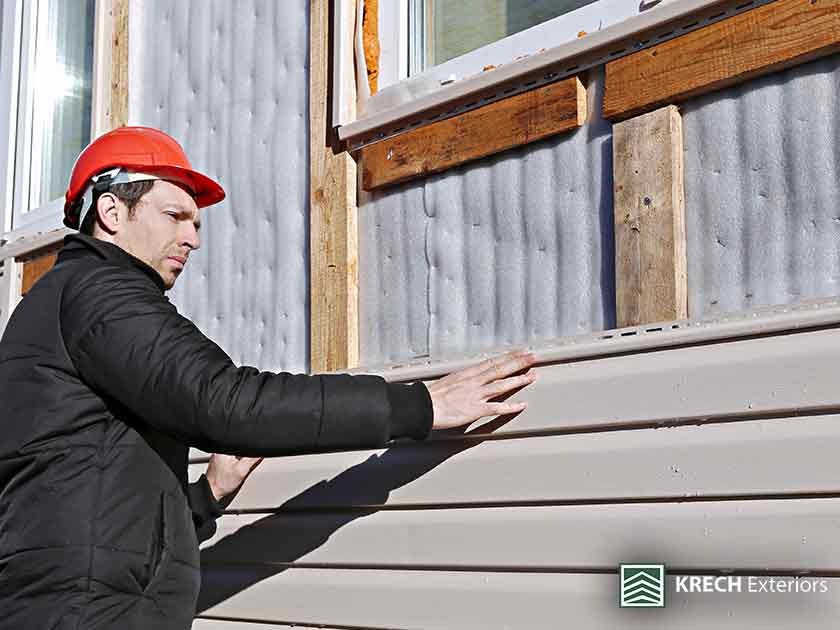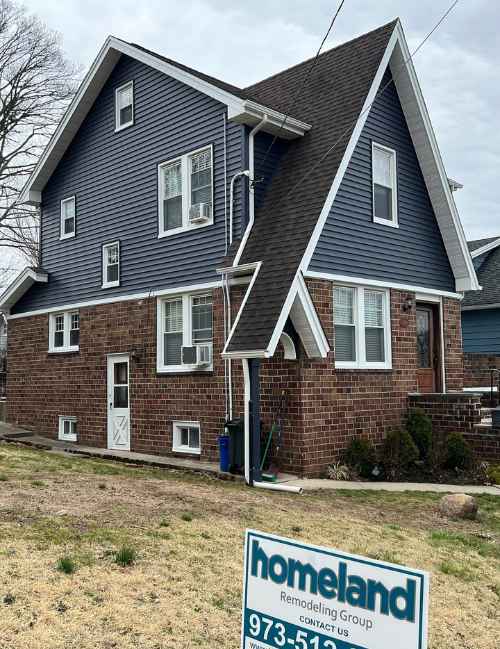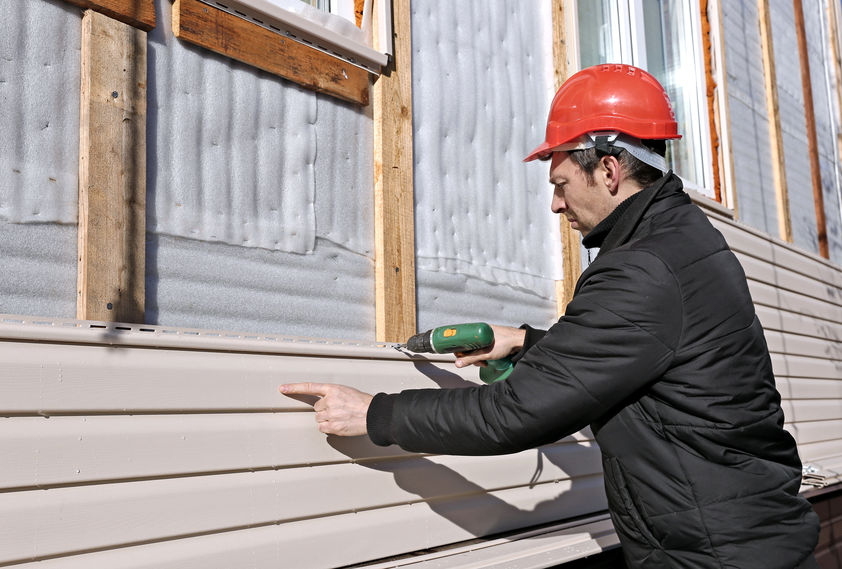Reliable Morris Siding Contractor Specializing in Residential Siding Projects
Reliable Morris Siding Contractor Specializing in Residential Siding Projects
Blog Article
The Important Overview to the Numerous Sorts Of House Siding and Their Distinct Advantages
In the realm of home enhancement, picking the right home siding is a crucial choice that influences both aesthetic appeal and useful performance. The variety of products readily available, such as wood, vinyl, fiber block, concrete, and steel, each deal one-of-a-kind benefits that cater to different demands and choices. Understanding these distinctions can substantially boost the long life and worth of a building - morris siding contractor. However, with a lot of choices to think about, which house siding product truly stands out for your particular job? Discovering these selections can lead to informed choices that straighten with both design and usefulness.
Timber Exterior Siding
Wood siding, a preferred selection for property exteriors, offers a classic aesthetic that incorporates natural beauty with architectural stability. This exterior siding material is readily available in different styles, consisting of clapboard, shingles, and board-and-batten, permitting house owners to personalize their façade to match their layout preferences. Wood home siding is normally crafted from durable varieties such as cedar, redwood, or yearn, which are known for their strength and capability to withstand ecological stressors.
Among the primary advantages of wood home siding is its outstanding insulation homes, which can add to energy performance and lower home heating expenses. In addition, wood home siding is biodegradable, making it an eco friendly choice when sourced sustainably. Regular maintenance, including painting or discoloration, can prolong its life expectancy and enhance its appearance, permitting property owners to protect the all-natural charm of the wood.
Nonetheless, potential disadvantages consist of susceptibility to bugs, rot, and weather damages, necessitating sufficient therapy and maintenance - morris siding contractor. In spite of these concerns, when correctly looked after, wood exterior siding can give a gorgeous and long lasting remedy that boosts the character of a home while providing a warm, inviting ambience

Plastic House Siding
Plastic siding has actually become a leading selection for house owners seeking a low-maintenance outside option that incorporates sturdiness and affordability. This flexible material is crafted from polyvinyl chloride (PVC), making it resistant to numerous climate condition, including dampness and UV rays. Therefore, plastic exterior siding does not warp, rot, or discolor, ensuring resilient aesthetic charm.
Among the primary advantages of plastic exterior siding is its considerable range of shades and designs, permitting homeowners to accomplish the wanted look for their residential or commercial property without the demand for frequent repainting. Furthermore, plastic house siding is easy to set up, which can significantly decrease labor expenses throughout construction or remodelling jobs.
Plastic siding also contributes to energy performance. Several options feature insulation backing, which improves thermal efficiency, assisting to keep comfy interior temperature levels and possibly decreasing energy bills. Its smooth surface assists in very easy cleansing, calling for only regular washing with a yard pipe to get rid of dirt and debris.
Fiber Cement Exterior Siding
Fiber concrete home siding has gained traction amongst builders and homeowners alike as a result of its impressive mix of longevity and visual adaptability. Made up of a combination of cement, cellulose, and sand Resources fibers, this house siding choice is engineered to endure extreme climate problems, including high winds, hefty rainfall, and temperature variations, making it a resilient choice for residential outsides.

Among the primary advantages of fiber cement home siding is its resistance to pests, such as termites, and its non-combustible nature, offering improved fire safety. morris siding contractor. Furthermore, it is available in a large array of styles, shades, and appearances, allowing property owners to attain their desired aesthetic without giving up efficiency
Another websites advantage is its reduced upkeep requirements; fiber cement home siding typically needs paint or discoloration every 5-10 years, which is much less frequent than other materials. In addition, its longevity adds to a lower general expense of possession, as it lowers the need for frequent repair work or substitutes.
Inevitably, fiber concrete house siding stands for a superb investment for those seeking a resilient, attractive, and versatile exterior option, combining both form and function to boost the home's aesthetic allure.
Steel House Siding
The attraction of steel siding depends on its robust sturdiness and modern aesthetic allure, making it a popular selection for modern design. Offered in materials such as light weight aluminum and steel, steel home siding uses a variety of surfaces and colors, enabling property owners to achieve a personalized appearance that enhances their style vision.

Energy efficiency is an additional considerable benefit, as numerous metal home siding products are developed with insulation choices that assist control indoor temperatures. This can result in decreased energy costs over time. In addition, steel house siding is usually recyclable, making it an eco-friendly option for sustainability-minded house owners.
The setup process for steel house siding can be reasonably simple, leading to a quicker turnaround time for building and construction tasks. Generally, metal siding combines functionality and design, making it a functional choice for those seeking a long-lasting and aesthetically appealing outside surface.
Brick and Rock Exterior Siding
Brick and rock exterior siding stands out as a classic option that enhances the visual charm of any kind of home. Understood for their resilience and reduced upkeep, these materials supply an outstanding return on investment while boosting the residential property's curb allure. Offered in numerous colors, appearances, and patterns, brick and rock can be tailored to fit diverse building designs, from traditional to modern-day.
Among the primary benefits of block and stone exterior siding is their power effectiveness. Both products have natural insulating buildings that help control interior temperature levels, possibly reducing heating & cooling prices. Additionally, they provide remarkable fire resistance contrasted to various other house siding options, contributing to improved security.
An additional advantage is their long life. Block and rock can last for years, frequently requiring very little upkeep beyond occasional cleaning. Unlike wood exterior siding, they are unsusceptible bugs and rot, making certain a durable outside that withstands the elements.
Conclusion
In summary, the selection of home siding considerably impacts a home's aesthetic appeal, power effectiveness, and upkeep demands. Each kind of house siding-- whether timber, vinyl, fiber brick, concrete, or metal and rock-- offers unique benefits tailored to different homeowner choices and environmental conditions.
One of the key benefits of timber siding is its superb insulation buildings, which can contribute to power performance and lower home heating prices. Additionally, timber house siding is naturally degradable, making it an eco friendly choice when sourced sustainably.One of the main advantages of metal exterior siding is its resistance to numerous ecological factors.Energy performance is another significant advantage, as lots of steel siding products are created with insulation alternatives that aid regulate indoor temperature levels. Each kind of house siding-- whether wood, vinyl, fiber metal, brick, or cement and stone-- provides distinct benefits tailored to different house owner choices and ecological problems.
Report this page